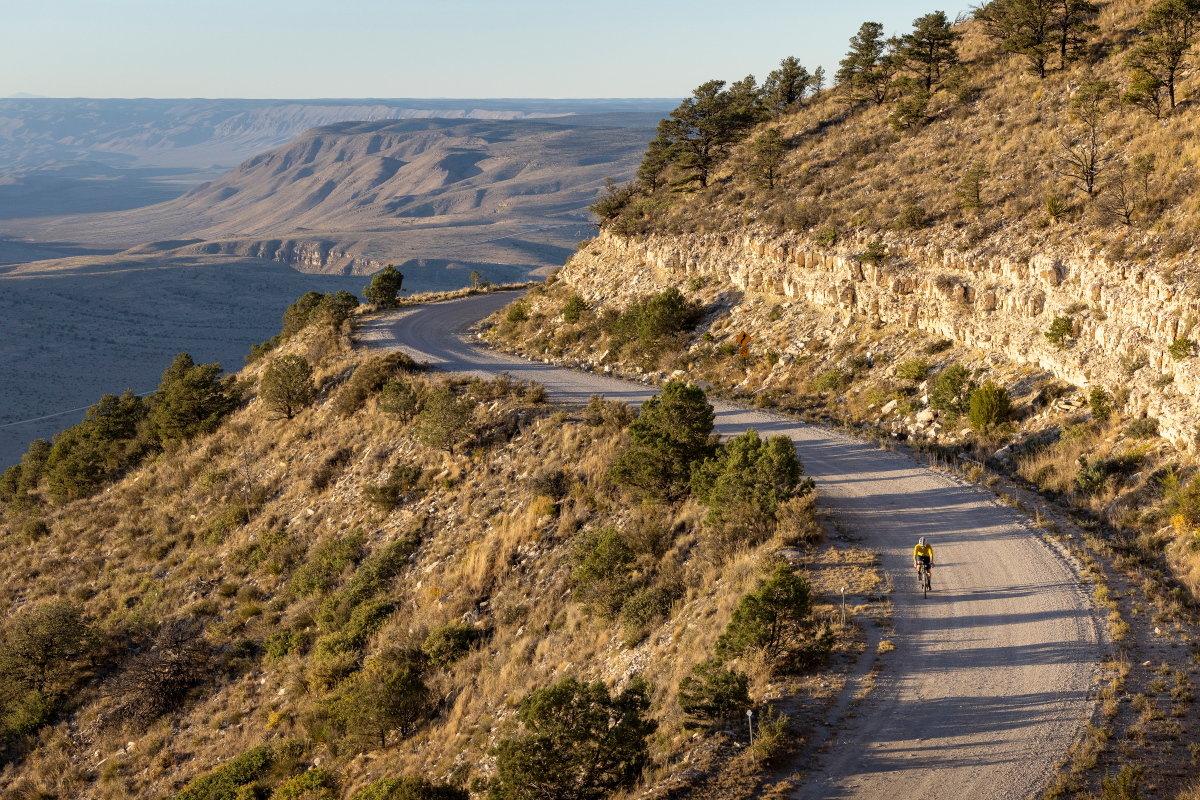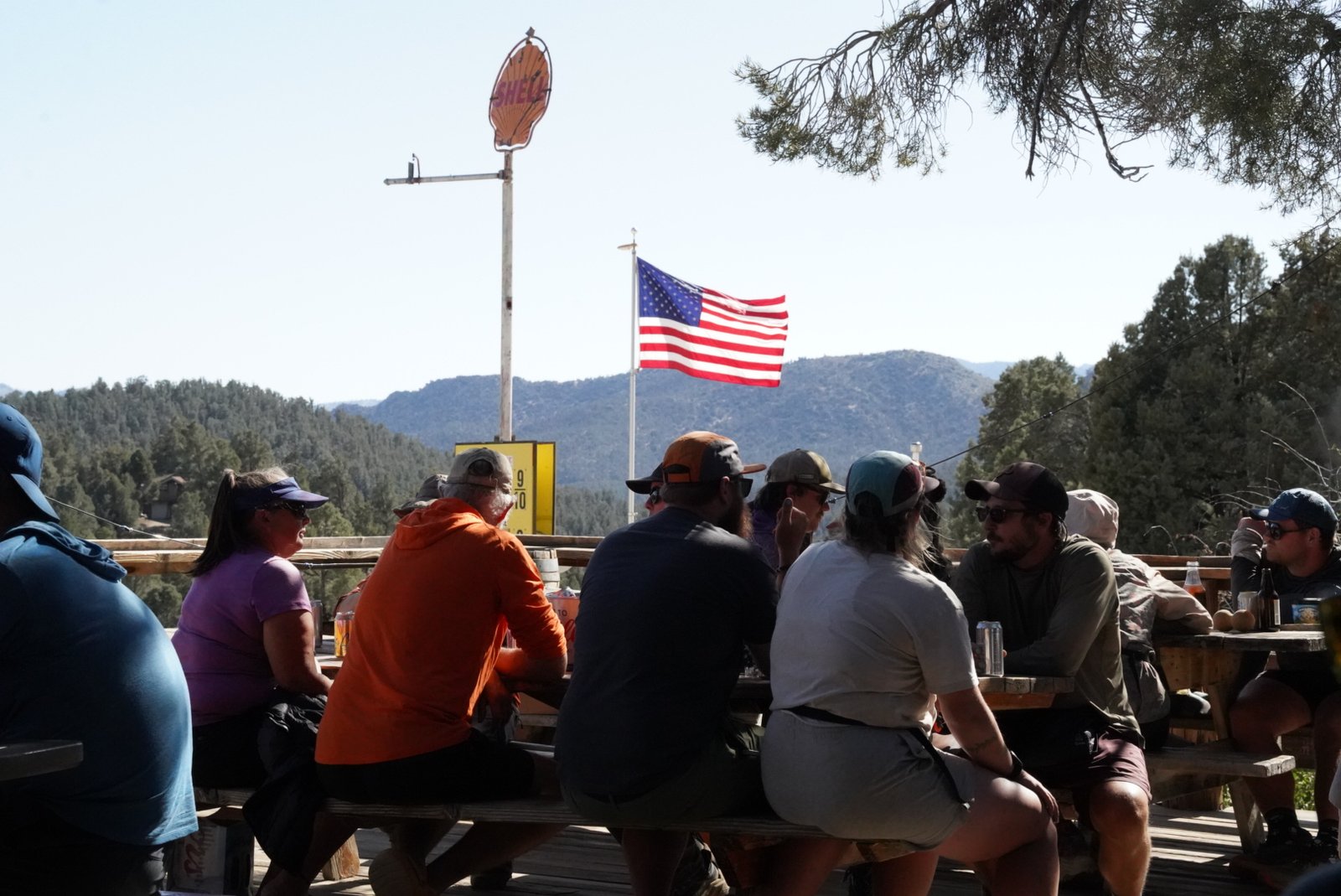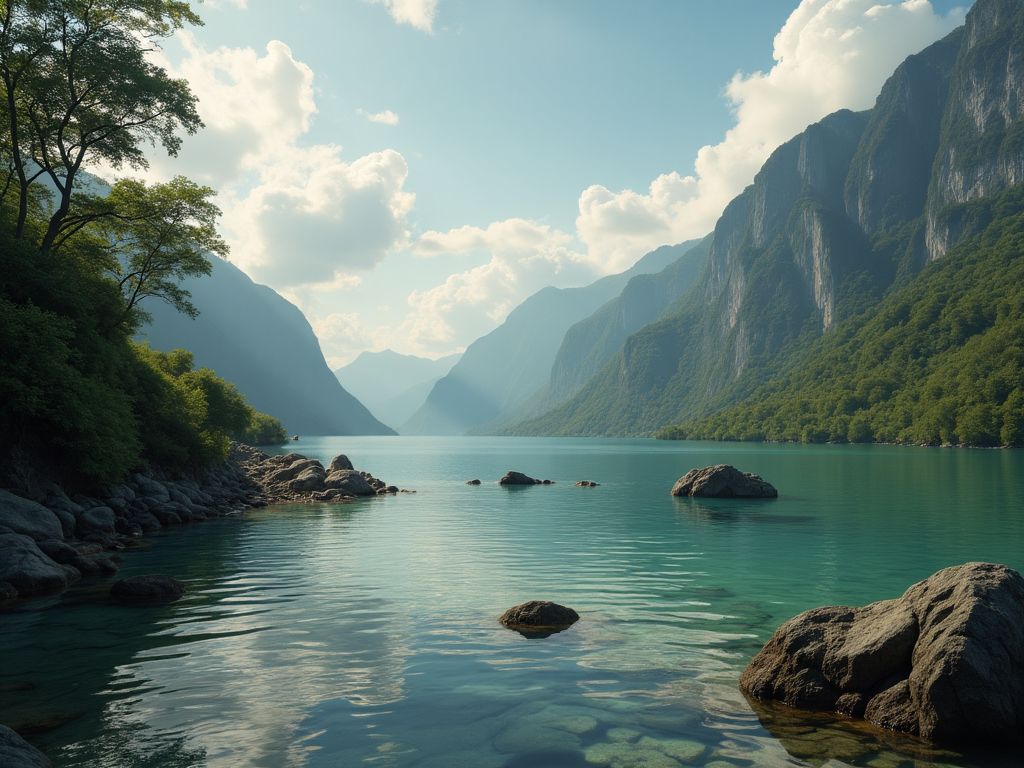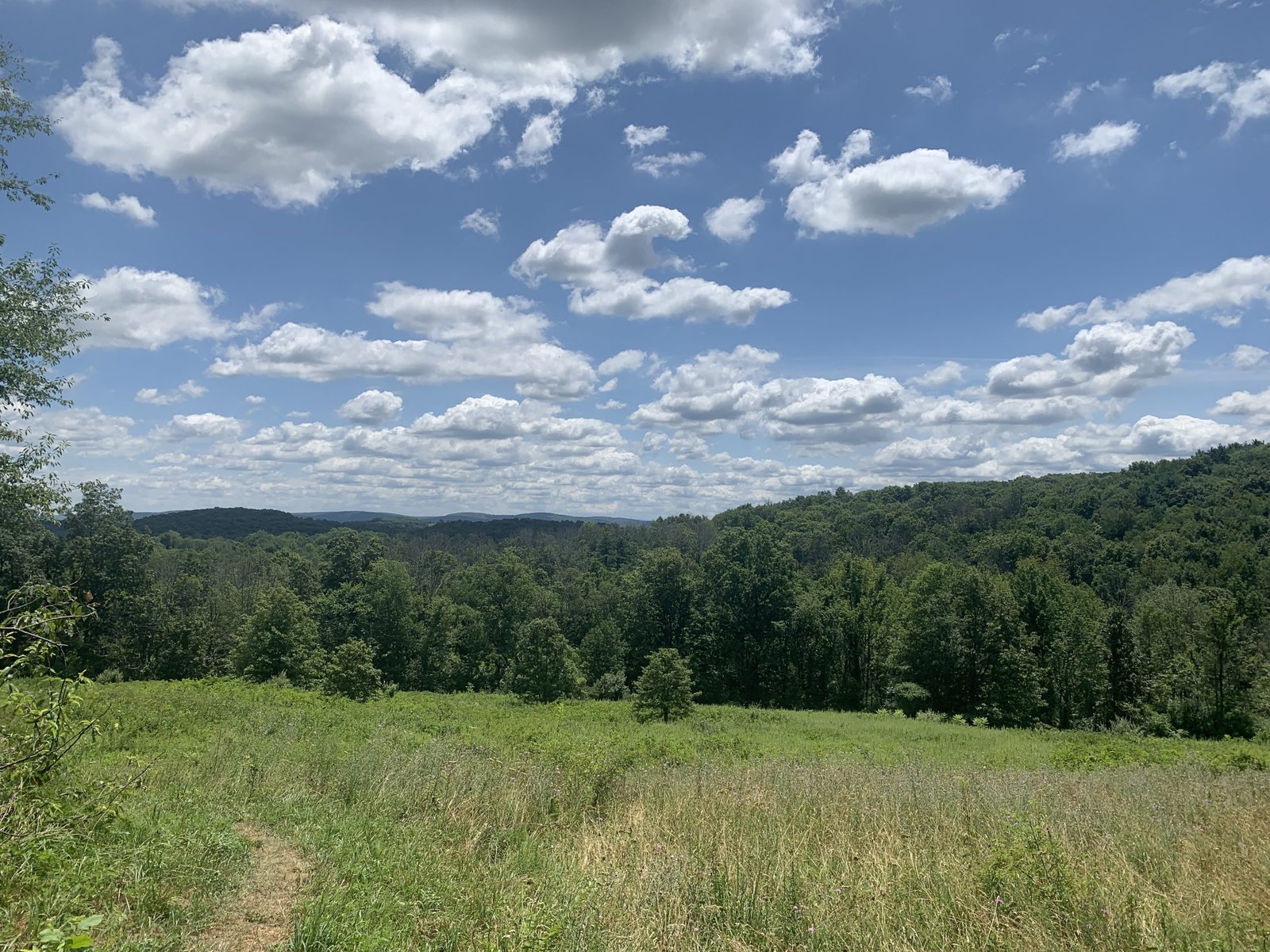Destinations & Things To Do
Enjoy Hiking, Biking, and More Outdoor Adventures in Carlsbad, New Mexico

Destinations & Things To Do
Kennedy Meadows & Into the Sierra

Three whole nights in one place – our first proper break! Kennedy Meadows marked the end of the desert and the start of something new. Between laundry, gear upgrades, bear can drama, and one homemade Czech trail magic, we wrapped up the desert chapter in style. On Day 54, we finally stepped into the Sierra – with snow gear strapped on, a bear can full of food, and a banana bread in our pack.
Day 52 – Pancakes, Packages & Planning
The downside of hiker hubs? Too many hikers. Some partied a little too hard last night, so the early morning hours were full of loud voices and wobbly footsteps. Still, we slept surprisingly well.
We stayed in our sleeping bags until almost 7:30, but when we finally rolled out, breakfast was calling! Turns out, so was everyone else. Long line, and a delayed opening. We didn’t get food until after 10.
Patrik got a burrito; I went for the “Hiker Breakfast” with Lea and Tim – eggs, hashbrowns, sausage, and a pancake so massive it didn’t fit on the plate… or in our stomachs. We packed the leftovers for lunch.
Next mission: resupply. We waited a bit, but at least there was Wi-Fi. New shoes (finally – over 700 miles!), food, and cute little birthday beanies. Patrik gifted me mine.
Then it was time for Triple Crown Outfitters – this little shack has everything: food for 7 days, bug nets, fresh socks, gaiters, and the big-ticket items – bear canister and ice axe. The bear can is that lovely blue barrel we now have to store all our food, trash, toothpaste, and smelly stuff in overnight. The folks there also gave us a quick rundown on ice axe basics.
Next up: the chaos of repacking. Somehow, we made it work. While Patrik finally got a hot shower (the water just started working again), I queued up for the laundry.
Reward? A milkshake and a well-deserved rinse.
By dinner, we met up with Doug and Veary – our new hiking crew for the Sierra. We went over route planning and snow strategies.
Laundry pickup had one final surprise: all of us were missing a sock. We searched everywhere. Then I remembered Marlen has the same ones as me… and sure enough – she had both of ours. Sock mystery solved. Good night.
Day 53 – Double Zero = Double Chill
First time taking a double zero – three nights, two full days. Yesterday was busy. Today? Nothing but chill.
We still woke up around six (ugh, body clocks), but at least there was no rush. Breakfast: leftover pancake.
We spent the morning catching up on calls – even got to chat with our friend Marťa. Then one last trip to TCO for a few forgotten odds and ends. Slowly, it was time for lunch: we shared a pizza (no hiker hunger today).
Then came a fun moment – decorating our ice axes with nail polish and snapping a group photo.
Finally, time for real relaxation. We laid in the tent and watched a few episodes of our show.
And then: the big moment! Patrik’s Czech trail magic. A few weeks ago, he came up with a small project – to share a little piece of home with the trail. So many hikers and strangers have helped us, and he wanted to give something back. He made a post on LinkedIn asking for support, and ended up partnering with To není možný, a Czech brand. They sent us a package of Liluka snacks, which we handed out to hikers around Kennedy. We were so happy to share a bit of Czech flavor with this awesome community.
Before dinner, one last hot shower. Then burgers for dinner and a quick round of card game instructions from Timo. I was a little disappointed – they ran out of ice cream. No milk either! And I’d been looking forward to it all day…
Anyway. We repacked our food one last time, brushed our teeth, and called it a night.
Day 54 – Banana Bread & Bear Cans
We woke up naturally – a mix of excitement and nerves. New terrain, new routines. Packing took a while as we figured out how to attach everything. Patrik and I decided to keep our food inside our packs and strap the bear can (empty or with clothes) on top. Others carried their cans vertically inside the pack.
Before we left, a fellow hiker gave us banana bread – his wife had baked it for him. Then we waited for the shuttle back to trail.
Miraculously, we squeezed six hikers and their packs into the car. Back on trail! Today was a training day – hiking together as a group, even though it wasn’t strictly necessary yet.
Barely two miles in, we hit trail magic: pancakes and oranges. Yes, please!
The trail is already changing. Still a bit sandy, but no longer desert-like. We crossed a proper river and had water almost the whole way. What a luxury!
Only desert memory left? A snake watching us from the bushes.
Snack break = banana bread. Then we filtered water and had lunch by a creek. We decided to go a bit farther than planned. Doug even showed us a tree that smells like caramel!
Later, from a bridge, we saw fish in the river. From cacti to trout – what a transition. We reached our camp by 4 – a quiet spot in the woods near a little stream. We rinsed off, stretched, and set up camp.
Dinner had to be 70 steps downwind from our tents. That’s also where we left our bear cans overnight – filled with food, toothpaste, sunscreen, even trash. Everything a bear might love. Not all of it fit tonight, but we’ll eat some tomorrow. Walking there and back in camp shoes? Something to get used to.
Goodnight from the edge of the Sierra.
This website contains affiliate links, which means The Trek may receive a percentage of any product or service you purchase using the links in the articles or advertisements. The buyer pays the same price as they would otherwise, and your purchase helps to support The Trek’s ongoing goal to serve you quality backpacking advice and information. Thanks for your support!
To learn more, please visit the About This Site page.
Destinations & Things To Do
Untouched Destinations: Stunning Hidden Gems You Must Visit
Discover the magic of untouched destinations—hidden gems where nature’s beauty and local culture remain pure, offering travelers a serene escape from the crowds and a chance to experience the world in its most authentic form.

The World’s Most Untouched Destinations: Where Mass Tourism Hasn’t Reached
In an age dominated by Instagram-worthy spots and heavily trafficked landmarks, many travelers yearn to explore truly off-the-grid places, where crowds are absent, and nature or local culture remains undisturbed. These untouched destinations offer a rare glimpse into serene beauty and authentic experiences, often preserved by geography, accessibility challenges, or conscious local stewardship. For those seeking adventures away from the conventional travel sphere, understanding where to go — and how to respectfully engage — is crucial. Here, we delve into some of the world’s most pristine locations, enriched by insights from locals and explorers who have ventured beyond the beaten path.
Explore Truly Off-the-Grid Places: The Appeal of Untouched Destinations
The appeal of untouched destinations is multifaceted. Beyond the aesthetic and environmental purity, these sites often carry a sense of solitude and intimacy that mass tourism struggles to deliver. They provide a chance to reconnect with nature and local cultures on a deeper level, away from commercialized settings.
Locals from these regions often have a distinct perspective shaped by years of living in harmony with their environment. For example, indigenous communities in the Amazon rainforest emphasize sustainable practices that preserve their land while welcoming curious travelers with respect and openness. Similarly, remote islanders in the Pacific encourage visitors to immerse themselves in their traditions rather than simply observe from a distance.
Explorers who specialize in off-the-grid travel often emphasize preparation and sensitivity. Understanding local customs, minimizing environmental impact, and supporting small-scale, locally owned businesses all contribute to sustaining the fragile ecosystems and cultural heritage of such places.
Hidden Gems of the World: Where Mass Tourism Has Yet to Bloom
1. The Faroe Islands, North Atlantic
Nestled between Iceland and Norway, the Faroe Islands have escaped heavy tourism despite breathtaking cliffs, dramatic fjords, and vibrant birdlife. With fewer than 100,000 inhabitants, the islands maintain a quiet, authentic charm that travelers find irresistible. Locals welcome visitors but advocate for cautious tourism development to keep the place unspoiled.
According to a community leader in Tórshavn, the islands prioritize small-scale eco-tourism initiatives that promote hiking and wildlife-watching without overburdening the local infrastructure. Exploring this archipelago means wandering serene coastal paths, dining on fresh, locally caught seafood, and engaging with a rich cultural tapestry of Viking history and Nordic influences.
2. The Kamchatka Peninsula, Russia
Far removed from European Russian cities, Kamchatka offers volcanic landscapes, steaming geysers, and extensive wilderness. Few tourists venture this far east due to the region’s remoteness and challenging logistics. However, those who do are rewarded with unrivaled natural beauty and encounters with bears, salmon runs, and traditional reindeer herders.
Native Koryak people and other indigenous groups emphasize living in balance with nature, inviting respectful visitors to learn about their customs and traditions. Explorers emphasize that traveling here requires preparation for rugged conditions and a spirit of adventure, but the payoff is a rarity in modern travel — pristine solitude.
3. Taveuni Island, Fiji
Often overshadowed by Fiji’s more popular islands like Viti Levu or Vanua Levu, Taveuni remains a hidden paradise with lush rainforests, cascading waterfalls, and rich coral reefs. The local communities are active in conservation efforts to protect Taveuni’s biodiversity, which includes rare bird species and vibrant marine life.
Visitors who come here to explore off-the-beaten-path trails and dive pristine reefs are urged to support community-run eco-lodges and cultural tours. Local guides share stories passed through generations, providing travelers with a deep connection to the land and sea far away from typical tourist crowds.
How to Travel Responsibly in Untouched Destinations
When exploring truly off-the-grid places, it’s important to embrace responsible travel practices. Many local residents have expressed concerns about preserving their environment and culture, as unchecked tourism can bring unintended harm.
Here are several guiding principles recommended by locals and experienced explorers:
- Respect Local Customs: Take time to learn about and respect the traditions and ways of life of indigenous communities. Friendly inquiry and cultural sensitivity go a long way.
- Minimize Environmental Impact: Stick to established trails, avoid disturbing wildlife, and use eco-friendly products to reduce your footprint.
- Support Local Economies: Choose locally owned accommodations, hire guides from the community, and purchase handmade crafts to contribute positively to the local economy.
- Travel Light and Slow: Reduce the frequency of travel and extend your stay when possible to lower carbon emissions and engage more deeply with your surroundings.
- Stay Informed: Keep updated on local conservation efforts and challenges. Being an informed traveler helps advocate for sustainable tourism.
The Future of Untouched Destinations in a Connected World
As global connectivity increases, few places will remain completely untouched forever. However, the growing awareness of sustainable travel’s importance may help safeguard many of these hidden gems. Technology can be a double-edged sword — while it spreads awareness and attracts visitors, it can also overwhelm fragile environments if not managed correctly.
Both local stakeholders and travelers hold responsibility for ensuring that these rare sanctuaries remain intact. Responsible travelers can act as ambassadors for preservation, sharing the beauty and cultural richness of these places while respecting their boundaries.
Ultimately, the allure of truly off-the-grid places lies not only in their pristine landscapes but in the unique human stories they preserve. To explore these corners of the world is to embark on a journey of humility and discovery — a profound reminder that some of the greatest travel experiences occur away from the trodden tourist trails.
For those inspired to step beyond familiar destinations, embracing patience, respect, and curiosity can unlock unforgettable adventures that few have had the privilege to experience. The world’s most untouched destinations are not simply places on a map; they are living testaments to nature’s and humanity’s enduring harmony.
Destinations & Things To Do
AT Musings: Trudging through “the Doldrums”

Hello, internet friends. I’m about 1300 miles into my Appalachian saunter and my feet hurt, it’s hot as hell, the bugs have bones to pick and evidently I find myself complaining rather often. Yet I am closer to the promised land of Maine than I ever have been, and as hard as it may be to believe, I’m enjoying my beautiful surroundings. New Jersey, you rock!
When speaking on a surface level about the AT, conversations typically revolve around two to three locations: the South and New England, but mainly just Maine and New Hampshire for the second bucket. Pennsylvania gets an honorable mention for how terrible the rocks are, and Vermont is admired for its beauty and mud, but outside of that, there is a sizable portion of trail, basically from Maryland to Connecticut, that is not discussed at large. That’s the section I am in right now, and I want to share some thoughts I have on: why this part matters a lot, the expectation setting of others and the endurance and adaptation needed to make it all the way.
A little over a week ago, I decided to take some space from my “tramily,” whom I had been hiking with for roughly 650 miles. It was a hard decision to make, but I could tell there was an unfulfilled need that could be nurtured through hiking solo. I eventually recognized that it was curiosity, a core value to my existence. While I appreciated the great company of my friends, I craved the opportunity to meet new people and explore the world on my own for a bit. Sometimes you just need to spend a night alone in the woods to figure some things out.
Just two days into my venture, I met my friend Woody, a fast, wise Canadian who carries a banjo. Our conversation made me feel justified in my decision, and together we came to the name of this article: “the Doldrums.” This nautical term refers to an area in the Atlantic with little surface wind, becalming ships or even bringing them to complete stillness. Sailors dreaded the doldrums because they could be delayed for days or even weeks, leading to difficult situations with food and water shortages.
After enduring Virginia’s 570 miles, your sense of distance and time become somewhat obfuscated since it is so much larger than any other state. You also hit a series of milestones around that time: the 1,000 mile mark during the “Rollercoaster”; Harpers Ferry, WV, which is the mental halfway point; Pine Grove Furnace, PA, the actual halfway point; and somewhere after the amazing 501 shelter (please don’t tear it down NPS!) you reach the 1,200 mile marker, suggesting you’ve only triple digit miles until Katahdin.
This also seems to be the section of trail where many people throw in their towels, and I can understand why. Amid all these milestones are some deep emotions and physical exhaustion from walking a thousand miles. It’s also the first time we’ve dealt with serious heat — the kind that makes friends from the Paved Realm text to say “I can’t believe you’re hiking right now!” — and with it come the bugs, sweat and dehydration.
Pick your poison: scalding heat, 90% humidity, or even both, which was the case for my Rollercoaster experience.
Though I said the Doldrums resemble a 500-mile stretch that isn’t really talked about, on the other hand, the amount of expectation-setting I have heard in the last few weeks has been off the chains. While I recognize it comes from a place of care, nearly every person I encounter on the trail has something to say about what my future holds and how good or bad it’ll be.
“You may climb the ladder, only to realize it was against the wrong wall.” — Joseph Campbell
Everyone knows that Pennsylvania’s alias is Rocksylvania, and that your feet will be penalized by the hard terrain. As I ventured north across the state, I encountered rocks and observed my foot pain. But then I was told “you haven’t seen any rocks yet! Just wait til Duncannon.” And after passing Duncannon, “the rocks don’t start til Swatara Gap!” At Swatara, it became Port Clinton, and so forth. I was frustrated by these unsolicited descriptions of how my trail experience would be, so I decided to push as hard as I could and finished the state of PA in just 9 days of hiking. While proud of my physical accomplishment, my Munk-like nature of being present was hindered by this constant setting of expectations.
Of course, Pennsylvania is neither the first nor last time that someone will try to write my trail experience for me (I will also use this moment to vindicate those who accurately said the rockiest part was at the end of the state). Virginia was deemed flat, and I have probably been warned of the steepness of the White Mountains more than 100 times since Springer. My point is not to correct these descriptions or scold others for recounting their experiences; rather it’s to remind us all to hike our own hikes and live in the present moment.
My feet hurt from Pennsylvania, but I found the state to be quite beautiful. As I travel through New Jersey, I have walked through more rocks — many have joked that Penn’s rocks come from Jersey — but I’ve also seen a glacial pond and had undisturbed serenity in these woods already. Moreover, the mid-Atlantic has demonstrated a unique relationship between trail and town, where civilization intertwines with nature in an unusual way. Drifting into a town each day allows us hikers to grab a cold drink and pack out a sandwich if we want; we call that “deli blazing.”
From river forts to walking under interstate bridges, the Appalachian Trail shines in its multifaceted beauty. You can only ever appreciate it and express your love to it when you are actually there — the past and the future are only figments of the mind. I said it in the last article and I’ll say it again: hike your own hike!
Furthermore, I think the Doldrums render a bit of confusion about our objectives for the trail. With milestones noting our proximity to finishing, such emphasis on mileage might make us forget all the other reasons we are doing the trail — be it spiritual ones, self reflection or something else. In the book “Appalachian Trials” by Zach Davis, which highlights the mental hardships of the AT and how one can prepare, he recommends creating a list of all the reasons why you’re out here, as well as how you might see yourself after successfully completing the 2,200 miles. It’s less about setting expectations and more about creating a reference sheet that you can look to when times are tough.
The three reasons I wrote back in 2023 are: I want the time to reevaluate the direction of my life and career, I can do a computer job for the rest of my life, and I am looking for a challenge that will help me build greater self confidence and character. Is there a clear and definite connection between getting 27 bug bites — on one foot, in one night — and separating myself from a monotonous marketing job? Not really, but with each successful day of enduring physical hardship, I can better recognize the self-reliance and autonomy I am developing for myself. Looking back, that day of bug bite hell doesn’t seem so bad!
“But nothing ever stays the same
Nothing’s explained
The stronger the wind, the faster we’ll fly” — Yo La Tengo, “Ohm”
In closing, what makes me call out this 500-something-mile section of trail is that it signifies an important time to look inward and remind ourselves why we’re out here. I want all of my 2025 classmates to reach Mama K, but I have also observed justifiable fatigue, impatience and deflation lately, both in myself and in others. There have been lonely days where I haven’t seen another soul, and there have been others where I am so bothered by the heat that it’s hard to be kind. But I know that this is temporary, that the entire Atlantic Ocean isn’t a doldrum, and that there are truly magical woods that lie ahead. I also called my mom the other day and that helped a lot, too. So long as I keep putting one foot in front of the other, the journey will continue.
Trudge onward, fellow AT sailors!!
Munk (like Funk)
This website contains affiliate links, which means The Trek may receive a percentage of any product or service you purchase using the links in the articles or advertisements. The buyer pays the same price as they would otherwise, and your purchase helps to support The Trek’s ongoing goal to serve you quality backpacking advice and information. Thanks for your support!
To learn more, please visit the About This Site page.
-

 Mergers & Acquisitions1 week ago
Mergers & Acquisitions1 week agoHow Elon Musk’s rogue Grok chatbot became a cautionary AI tale
-

 Mergers & Acquisitions1 week ago
Mergers & Acquisitions1 week agoAmazon weighs further investment in Anthropic to deepen AI alliance
-

 Asia Travel Pulse2 weeks ago
Asia Travel Pulse2 weeks agoLooking For Adventure In Asia? Here Are 7 Epic Destinations You Need To Experience At Least Once – Zee News
-

 Mergers & Acquisitions1 week ago
Mergers & Acquisitions1 week agoUK crime agency arrests 4 people over cyber attacks on retailers
-

 Brand Stories2 weeks ago
Brand Stories2 weeks agoVoice AI Startup ElevenLabs Plans to Add Hubs Around the World
-

 AI in Travel2 weeks ago
AI in Travel2 weeks ago‘Will AI take my job?’ A trip to a Beijing fortune-telling bar to see what lies ahead | China
-

 Mergers & Acquisitions1 week ago
Mergers & Acquisitions1 week agoEU pushes ahead with AI code of practice
-

 Mergers & Acquisitions2 weeks ago
Mergers & Acquisitions2 weeks agoChatGPT — the last of the great romantics
-

 The Travel Revolution of Our Era1 month ago
The Travel Revolution of Our Era1 month agoCheQin.ai Redefines Hotel Booking with Zero-Commission Model
-

 Mergers & Acquisitions1 week ago
Mergers & Acquisitions1 week agoHumans must remain at the heart of the AI story
